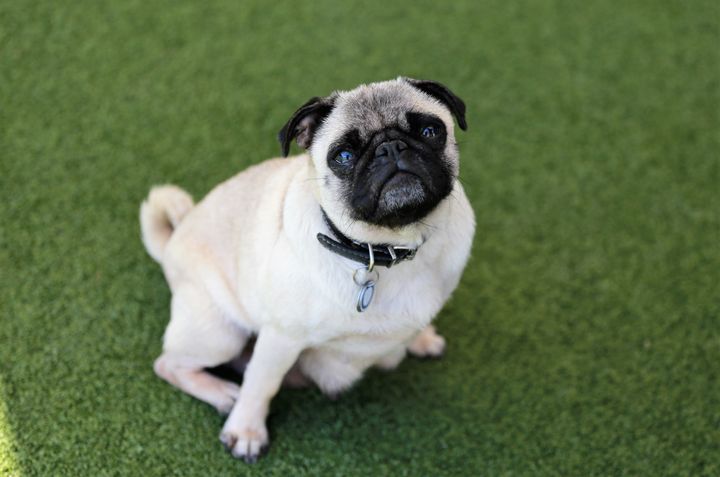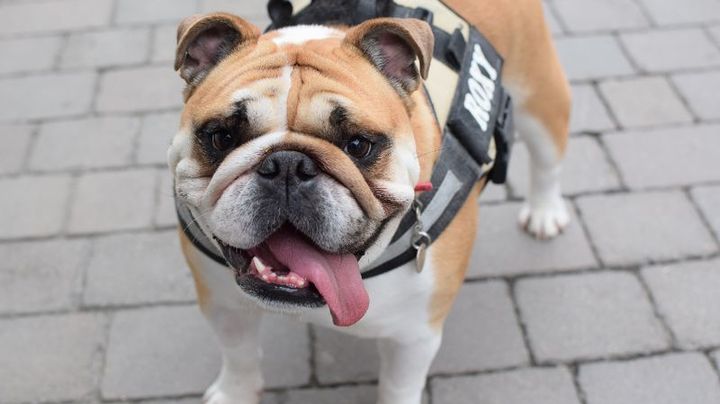
Think of a dog and what do you picture? Chances are it will be a Labrador, or maybe a Spaniel or a Collie. But, for many of today’s dog owners, it is very likely to be a Pug or a French Bulldog.
Flat-faced (Brachycephalic) breeds, have become the dogs du jour – and in recent years images of them have appeared on clothes, in advertisements and even on the silver screen. In the past couple of months, we’ve seen a Pug star in Disney’s latest movie Patrick and an operatic French Bulldog become a social media sensation. With so much exposure, it wasn’t a surprise to us at Battersea when the French Bulldog was recently named the nation’s most popular breed by the Kennel Club, overtaking even the Labrador for the first time.
But, behind their baby-like faces lies a dark and sad tale which makes the rising popularity of Frenchies, Pugs and other flat-faced breeds alarming and heartbreaking in equal measure.
Flat-faced dogs pay a breathtakingly high price for their desirable looks. Their squashed faces mean their airways are shorter than most dogs, greatly restricting their breathing and leading to terrible respiratory problems. Sadly, these dogs often require complex surgery just to be able to breathe properly.

In 2015, Battersea’s vets performed surgery to widen the airways of seven flat-faced dogs. This is a major procedure that involves removing part of the dog’s soft palate and widening their airways so they can breathe properly. Three years on, the number of these operations has increased dramatically. So far this year, our vets have performed the procedure 37 times. This can lead to a better quality of life for these animals, but who’s helping the tens of thousands of others out there?
Owners may think their dog’s snorting and gasping is an endearing feature of the breed, rather than the life-threatening and agonising condition that it actually can be. If owners don’t know there’s a problem, these animals will struggle through a shortened life of constant discomfort.

Surely if these dogs were not being bred for their squashed-face appearance – and if unscrupulous breeders were clamped down on harder – these sorts of surgeries would not be necessary. Owners must research their chosen breed before they buy and breeders need to look long and hard in the mirror and ask themselves, “what really matters most – the money or the animal?” Sadly, I think all too many times right now, the answer may well be the former.
Frankie, a Pug, arrived at Battersea with his main airway so constricted he was breathing through a hole the size of pea. Battersea’s vets managed to widen his airways, giving him a far better quality of life. However, the surgery is no miracle cure and, while Frankie’s life will be improved, he will never be able to exercise or play in the same way as other breeds.

And yet Frankie is one of the luckier ones. Overbreeding has led to some flat-faced dogs developing medical problems so extreme, they’re fatal. Recently, an English Bulldog came into our Old Windsor centre as a stray. Her breathing was so bad she was unable to even walk and had to be carried into our clinic.
Here, vets discovered the multiple skin folds in her face were heavily infected and overbreeding had led to her jaw being badly out of alignment. Looking inside her mouth, they soon realised her airway problems were so severe, even surgery would not be able to help her. She was clearly in severe pain and in very significant distress, so our vets made the difficult decision to put her to sleep.
What infuriates me is that we’ve got to a place where people purposely breed dogs that can’t breathe, just to give them a so-called ‘fashionable’ look. This craze for breeding animals with unhealthy, exaggerated features is one of the most serious animal welfare issues we’re facing today.

So our perception of what’s ‘cute’ needs to change. We need to understand the constant snorting and snuffling noises of flat-faced breeds are not endearing, but are the sound of an animal struggling to breathe. Retailers and film makers can help, by choosing to promote healthy breeds that can run around and breathe with ease. But, in the end, it’s up to all of us. Breeders are catering for a market. We’ll only see an end to them producing dogs that are born to suffer if we stop buying them.